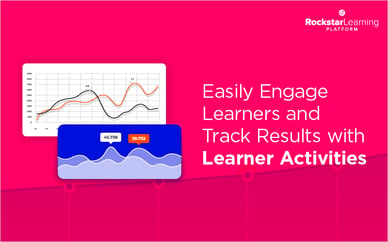Finding the right software to grow your technology ecosystem can be stressful and time-consuming. There are a wide range of tools on the market for most technological needs, and it can be daunting to sift through the selection to find the most cost-effective tool that meets your team’s needs.
Whether you are purchasing software for the first time or have bought software solutions in the past, these tips will help streamline the buying process while ensuring you have the right product for your needs and budget.
Step 1: Identifying Business Needs
As the proposal writer at eLearning Brothers, I was recently tasked with finding a new proposal management software to improve our proposal writing and management processes. I started my search by figuring out what problems I needed the tool to solve. Using my personal experience and feedback from my team as a reference, I documented inefficiencies in our processes that could be solved with new software.
Step 2: Understanding the Market
In order to make an informed decision, I needed to learn more about proposal management tools in general. I started by Googling “proposal management tools” and identified companies that sold proposal management software through rank-list websites like Capterra, G2, Owler, and technology blogs. From there, I went to the top-ranked companies’ websites and learned about their general features, tool environment, and business use cases. Unfortunately, most of the companies I reviewed did not provide pricing on their website, so I had to schedule demos before determining a ballpark budget for the tool.
Step 3: Identifying the Right Type of Tool
Once I knew enough about proposal management tools in general to start asking questions, I picked a few of the top-ranked tools and scheduled demos with the reps. Software categories are often very broad with many different sub-categories targeted towards more specific audiences or features. So rather than investigate what features each tool had, I found it more productive to learn how certain features could be used to improve our proposal process. To narrow the field, I worked with the sales reps to determine which type of proposal management tool would best fit my needs. For example, some tools focused on analytics and sales enablement, while others focused on creating and designing proposals. When I came across a tool I thought was a good fit, I asked the reps who their main competitors were to find other similar tools.
Step 4: Creating a “Must Have” List
While I was demoing different tools, I created a list of “must-have” features. I had to consider both features I needed to improve our process as well as features needed to implement the software in the company. For example, we use Hubspot and Google Suite for our sales operations, so I could easily eliminate tools designed for Microsoft Office and Salesforce. As soon as I found a tool that looked promising, I invited my IT manager and other relevant department managers to demo the tool as they could provide a “big picture” perspective on how the software would impact the company as a whole.
Step 5: Narrow the Field
As I learned about each software, I eliminated tools that were not the right fit. I was able to eliminate most contenders by removing any tools that did not have a “must-have” feature. After receiving pricing through demos, I was able to eliminate a few more tools based on price or pricing model (e.g. pay per project or pay per user). I also considered whether we wanted to partner with the company itself. Were they responsive and easy to work with? Will they help with training and implementation? How responsive is their support desk? I also narrowed the field by asking the sales reps in-depth or hyper-specific questions about their tool based on the features I liked from their competitors.
Step 6: Demo Environment
Similar to test driving a car before buying it, nothing can replace the information gained from spending time in the software before purchasing it. So with the couple of remaining vendors on my list, I used documents, content, etc. I needed and walked through several use cases for the tools to see how smoothly and effectively they solved our business problems. I paid special attention to the user interface, user experience, common errors, and error resolution. I explored questions like: How many clicks does it take to do a common task? Are the menus intuitive to navigate? If someone makes a mistake or error, how easy is it to undo? Is the tool easy to learn? Does the tool make your current workflow faster or does it complicate things? Does it really do everything you were told it could do?
Step 7: Decision Time
In addition to checking all of your “Must Have” boxes, I had to consider the software’s longevity. Because our company is growing, I needed a scalable software to accommodate that new growth. I also considered how often the tool developed new features or updated their software to keep up with new technology. In the end, the final decision came down to the tool that saved the most time, money, and effort for the cost spent on the tool.







